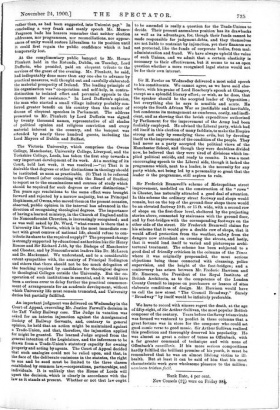Sir Frederick Bramwell's scheme of Metropolitan street improvement, modelled on
the construction of the " rows " in Chester, has naturally attracted a good deal of attention. In this scheme the ordinary street footway and shops would remain, but on the top of the ground-floor shops there would be an elevated footway 10 ft. or 15 ft. wide, with a second row of shops on the first-floor level, sheltered by the projecting stories above, connected by staircases with the ground floor, and by foot-bridges with the corresponding footways on the other side of the street. Sir Frederick Bramwell claims for his scheme that it would give a double row of shops, that it would afford protection from the weather, safety from the dangers now attendant on crossing the streets, and lastly, that it would lend itself to varied and picturesque archi- tectural treatment. The scheme has been subjected to a good deal of friendly criticism in the columns of the Times where it was originally propounded, the most serious objections being those connected with cleansing, police supervision, and the height of the foot-bridges ; and a controversy has arisen between Mr. Frederic Harrison and Mr. Emerson, the President of the Royal Institute of British Architects, as to the competence of the London County Council to impose on purchasers or lessees of Bites elaborate conditions of design. Mr. Harrison would have us call the new street "The Council Broadway." Surely " Broadway " by itself would be infinitely preferable.










































 Previous page
Previous page